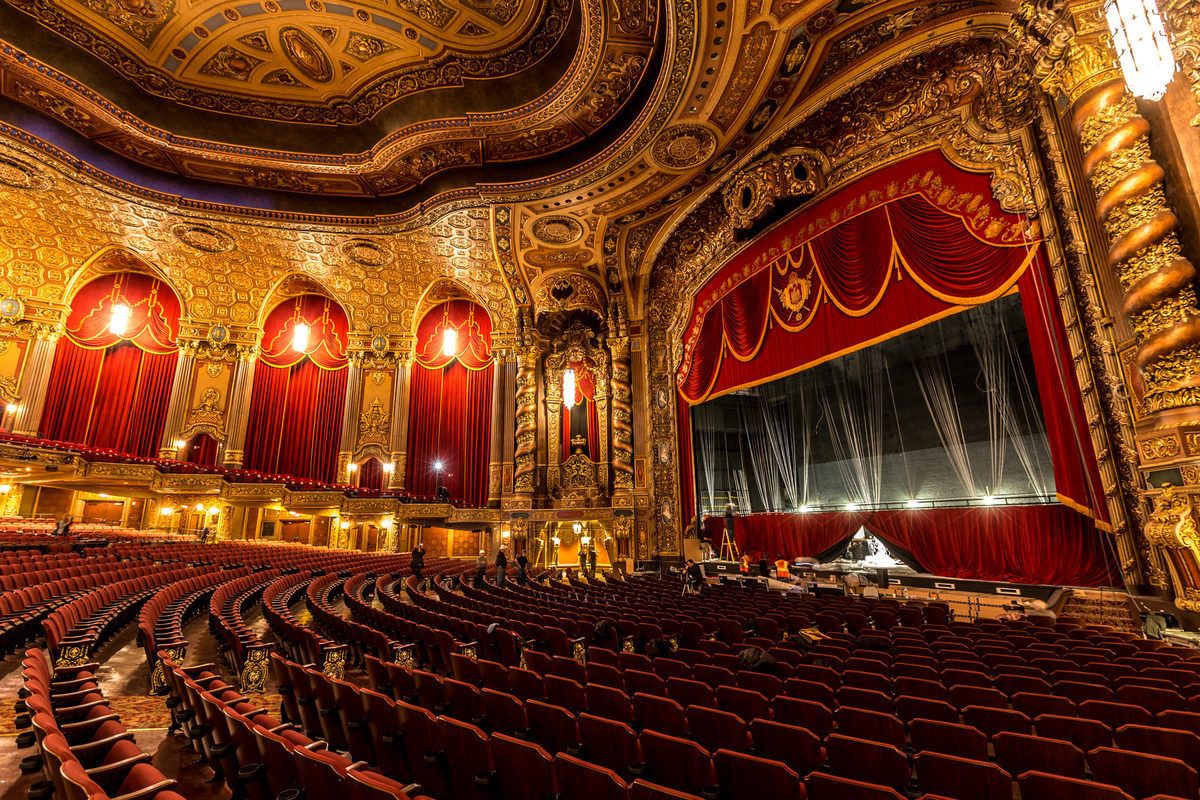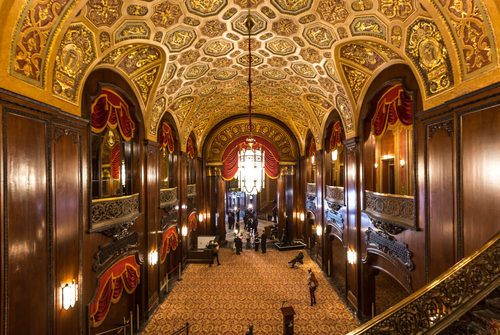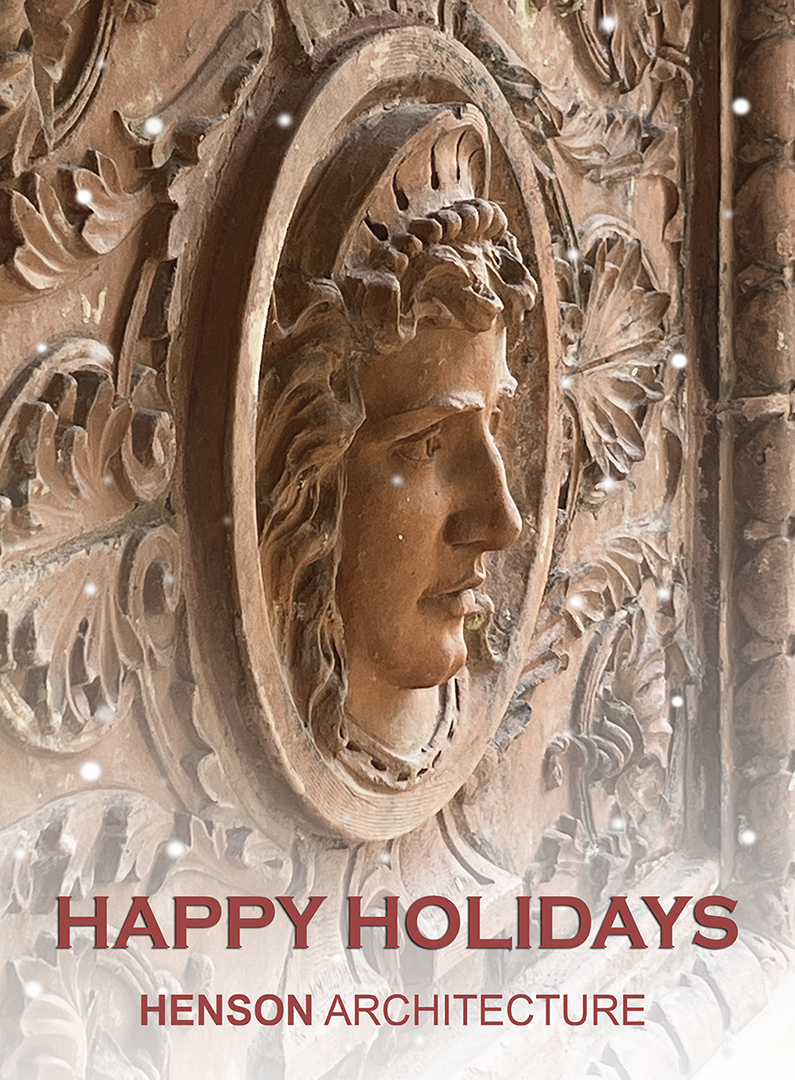Zoe Rosenberg reports for Curbed: Behold, Brooklyn’s Magnificently Restored Kings Theatre.
Two years ago to the day that the city embarked on a $94 million restoration of the Loew’s Kings Theatre in Flatbush, the institution reopened its doors and reclaimed its standing as Brooklyn’s largest theater. The restoration was painstaking: when it began in 2013, the theater had already been sitting vacant for four decades, a time during which looters plundered everything that wasn’t bolted down (and most of the things that were), and nature found its way into the neglected structure.
“The carpets used to kind of squish when you walked around,” Jeff Greene of EverGreene Architectural Arts said recalling the building in its pre-restoration state, when, during inclement weather, water would gush through the ceiling, down the balconies, and pool amidst the theater seats. Looking at the majestic space now, any traces of its derelict state have been absolutely erased. From the brink of utter deterioration, the former Loew’s Wonder Theatre has been saved and returned to the city perhaps in a more glorious state even than before.
Every inch of the Kings Theatre has been meticulously restored, and what work could be sourced locally was. Looters ransacked the building in the 40 years it sat unoccupied, tearing out everything from copper wiring to six of the promenade’s seven gorgeous chandeliers.
The six missing chandeliers were replaced with recreations made in Queens that were based on the one remaining fixture. Nowadays, it’s nearly impossible to tell which is the original and which are recreations. But such is the case with nearly every surface in the theater—when the restoration began, project architects Martinez+Johnson Architecture and EverGreene Architectural Arts stepped into a giant mess of a place.
EverGreene, a firm that specializes in historically accurate renovations, went so far as to analyze old photographs under microscopes to determine the exact right paint colors for the theater. What’s incredible is that a space that took one year to build from the ground up in 1928 took twice as long and a lot more energy to bring back to life in 2013-2014. Borough President Eric Adams presided over the theater’s ribbon cutting ceremony.
“Brooklyn, the county of Kings, has cleaned off its crowned jewel,” he declared nothing short of enthusiastically. The theater is being looked at as a hub for cultural and economic activity in a needing area of Brooklyn. Adams is quick to dismiss the theater as a “gentrification thing”, though. The restoration of the theater has been in the works, quietly, for decades.
Former borough president Marty Markowitz, who coincidentally had his first date at the Loew’s Kings, had been attempting to get the renovation rolling as far back as two decades ago. Had that happened, perhaps the theater would have ended up as the multiplex Magic Johnson—yes, the basketball player—wanted it to become. Now, it will host live music shows and cultural events like Disney Live! performances. The theater’s inaugural performance on January 27 was postponed due to inclement weather.
Diana Ross will spearhead the theatre’s public opening with a concert on February 3. “Mazel Tov!,” someone in the crowd yelled as the ribbon was cut. Smiles all around. As much as was possible, construction supplies for the theater were purchased locally.
And into the theater we go. The two-tiered room might not look that big in photographs, but the theater, with its 3,000 seats, is the largest in Brooklyn and the third largest in the entire city.
While the interiors were painstakingly restored, they were also brought up to modern standards that include this glowing disco emblem, whose lights can change colors. Kidding aside, the theater was updated with lights, acoustic absorption panels, and surround sound. Another place that was updated to meet modern demands is in the bathrooms, which were gutted, made ADA accessible, and multiplied.
In 1929, the theater had 26 toilets for women. In 2015, it has 75. Except for the area under a severe ceiling leak, all of the wood in the theater was salvaged which is an amazing feat, considering that Neil Heyman of Gilbane Building Company compared the theater when restoration began to”Titanic raised above water.” Let that image sink in. As part of the theater’s revamp, it has dropped the original “Loew’s” name.
Because the theater was originally built in 1929, there were few, if any, architectural drawings for EverGreene and ACE Theatrical Group to pull from. Instead, the theater’s specs, all the way down to its fabrics and paint colors, were determined by viewing historic photographs of the space under microscopes. As a result, the theater almost has a patina rather than looking brand spanking new. The theater was sheathed in scaffolding for nine months as it was being worked on. A few surprising things were discovered during the renovation beyond all of the gum and ephemera found under the theater’s seats. Gilbane’s Neil Heyman said a construction crew found a love letter inside one of the theater’s walls.
Although after searching, they found that both the author and recipient of the letter had passed, a genealogy search turned back the niece of the woman who had penned the letter, and it was given to her for safe keeping. “There’s a lot of life in the theater,” he said. Another pleasant surprise came when a 100-year-old woman who served as the theater’s last house manager contacted the restoration crew to tell them that she was in possession of six original chairs from the theater’s lobby and that she wished to return them to their home. If you look closely, there are recurring motifs in the theater’s decorations. Most notably, faces. Thousands and thousands of faces.
According to one of the guys working in the theater, these odd statues were all found decapitated when restoration began. Where the original heads may be now is still a mystery. While they’re lovely, they’re a bit creepy. No? The theater, which opened in 1929 and shuttered in 1977, has a lot of history with the community it served. Crews working on the building were constantly approached by neighborhood residents who, remembering past life experiences like graduations and first dates, constantly wanted to peek inside.
“There were so many curiosity seekers that we couldn’t help ourselves but to keep the doors open from time to time,” Heyman said, echoing sentiments from the ribbon cutting ceremony that the community has great respect for the history of the building. A carving inside one of the building’s original fountains reads “Drink and be refreshed.”
The glorious result of the restoration was achieved through a number of parties; with funding from the state of New York, NYCEDC and the Kings Theatre Redevelopment Company, which consists of ACE Theatrical Group, Goldman Sachs Urban Investment Group, and the National Development Council. Gilbane was the project’s general contractor, and Martinez+Johnson were the project architects. To view more photos click here.











